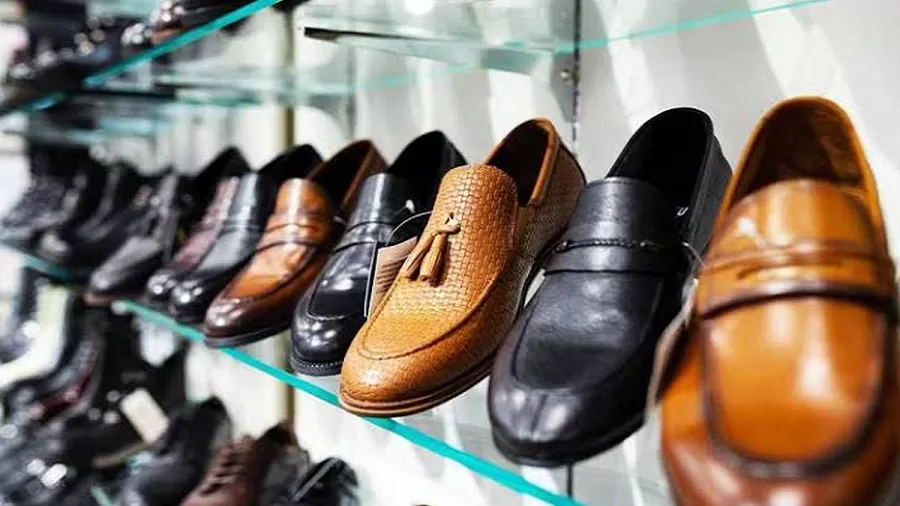Lifestyle
Global Trainer Maker Hong Fu Bets Big on India’s Footwear Potential

- Taiwan’s Hong Fu Industrial Group is on a heavy investment spree in India’s footwear sector by establishing a major factory in Tamil Nadu, which will manufacture an expected 25 million pairs of shoes a year and employ a total of 25,000 workers.
- India’s footwear sector is now undergoing a metamorphosis with growing foreign investments, emergent quality norms, and the inclusion of its large unorganised sector.
Taiwan’s Hong Fu Industrial Group may be unfamiliar, but you’ve most definitely worn their shoes. It produces 200 million pairs of sports shoes each year and is the world’s second-largest trainer producer, supplying Nike, Adidas, Converse, and Puma. This low-profile behemoth is now making a dramatic move into India, constructing a large factory in Panapakkam, Tamil Nadu. It is expected to generate 25 million pairs per year by January 2026, with full capacity likely scaling over the next three to five years, creating 25,000 jobs. This is one of the most critical developments in India’s expanding footwear sector.
Why India and Why Now?
To discover why global player Hong Fu would want to move to India, then?
According to Aqeel Panaruna, chairman of the Florence Shoe Company, one of the project partners from India, the international market has plateaued. “The international market is saturated, and they [Hong Fu] were looking for a new market.” And with India’s increasing demand for non-leather footwear, ‘Now’ could not have been a better time for Hong Fu.
“There is a drastic increase in non-leather footwear in India. It has huge potential,” he adds further.
This isn’t just about demand; it is part of a larger upheaval. The Indian government is trying to woo foreign investment, which it hopes will help modernise the industry and increase footwear exports.
Raising the Bar: New Standards, New Expectations
In August last year, India issued new standards for footwear concerning the Bureau of Indian Standards (BIS). These specifications range from material strength to flexibility, and they aim to guarantee a minimum level of quality for all shoes sold in India.
Sandeep Sharma, a journalist and footwear expert, says, “These BIS standards are really about cleaning up the market. We’ve had too many low-quality products flooding in, and consumers deserve better.”
The new provisions are seen as a welcome step by many, but at the same time, they have created a lot of friction in a market that has ever since been heavily dependent on a big unorganised sector.
Underrated Yet Truly Essential: The Unorganised Sector
In an industrial town like Agra, the reality is different shapes of industry. Millions of small-scale manufacturers in what would be termed the ‘unorganised sector are producing affordable footwear made particularly for everyday Indians.
According to Ashok, a shoemaker running several units in Agra, close to, if not entirely, 200,000 pairs are churned out daily in the region by businesses like his.
“Many consumers, especially in rural and lower-income urban areas, opt for cheaper local footwear instead of branded options,” he explains. “Many organised brands struggle to expand their retail footprint in semi-urban and rural areas because we cater to them.”
Two-thirds of the Indian footwear market are comprised of such local businesses, but ironically, they are the most susceptible ones to changes in regulations. The biggest criticism abroad and at home concerns the fact that most of these operations are forgeries of international brands.
Walking a Tightrope: Regulation Meets Reality
Now, what is this all about? Those small players left standing?
“It’s complicated,” says Mr Sharma. “The government is trying to walk a tightrope here. They can’t just shut down thousands of small businesses that employ millions of people — that would be economic suicide.”
The latest is a mix of pressure and support: supporting the implementation of required standards while providing help to upgrade at smaller factories. The point is not to bulldoze and crush the unorganised but to model a gradual fold.
An All-New Wave of Indian Footwear Brands
On the one hand are giant foreign manufacturers, who come to India, and small players, who adapt, while on the other hand is this new breed of native Indian brands making their mark.
Zen Barefoot, for instance. The firm advocates barefoot-style shoes, which support the movement of the natural foot. Founder Sabhib Agrawal feels that the footwear space in India is not innovative.
“There are very few people who are ready to take time and invest in new technologies here,” he notes. “Indian manufacturing is a very profit-first market.”
Another upcoming brand is Comet; it’s being hailed as the first trainer brand in India to bring 100% of its production process from designing to making.
“This level of control allows us to experiment with materials, introduce innovative silhouettes, and continuously refine comfort and fit based on real feedback,” says founder Utkarsh Gupta.
He emphasises the fact that these soles are exclusively made for Indian conditions and thus provide much better grip and durability as compared to bulk-bought ones in the market.
“The shift to high value is now happening,” he says. “Many high-value brands need to move their manufacturing to India. In 3–5 years, we should have a robust ecosystem to compete in the international sneaker market.”
What’s Next in the Story of Shoes for India?
Come back again to Agra; Ashok is optimistic. He believes small-scale makers like him have a bright future ahead if such types of changes happen in the ecosystem.
“The government should give us accreditation and certificates so our factories don’t close down. Once we too are included in the organised sector, no one can beat India in the shoe manufacturing industry,” he says.
Mr Sharma concurs that there is a very sharp market shift. “We’ll see the bigger players getting bigger — they have the money to adapt quickly. But I don’t think the small guys will disappear completely. The smart ones will find their niche.”
As the world looks at India in anticipation of its next step, one thing is for sure: the Indian shoe industry is on the threshold of a major transformation, which may finally prepare it for a global stage confrontation.



















































